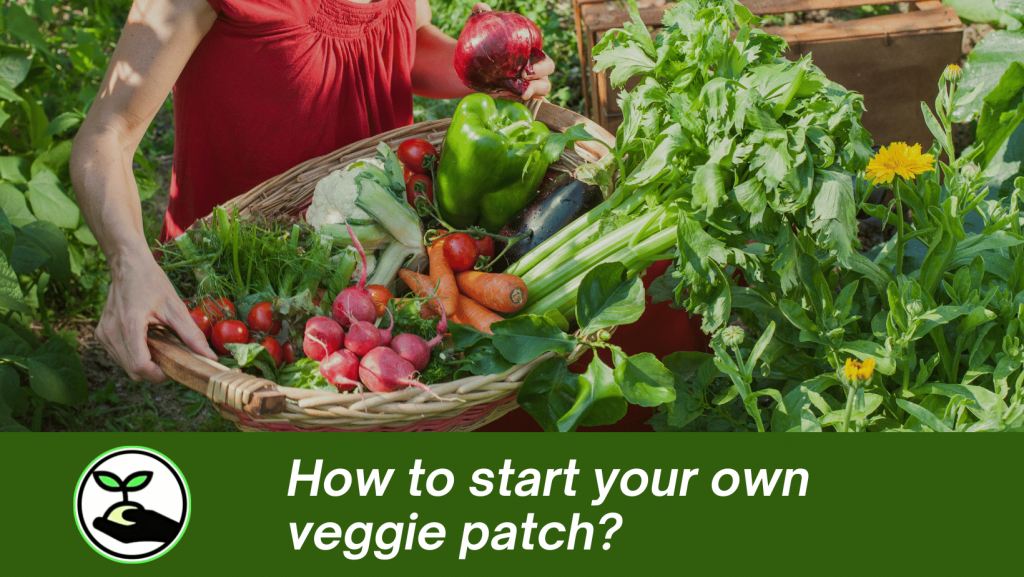Setting up a vegetable patch is the answer if you want to keep your veg intake as organic as possible while also saving money on your weekly shopping – especially for those who enjoy spending time outside. Here’s our guide to creating the ideal vegetable patch.
Consider the available space.
Not as much space as you might think is required. It is entirely possible to grow vegetables in patio containers, raised beds, or a vegetable patch as small as three square feet. (0.27 square meters)
Choose the best location.
To achieve the best results, choose a light, airy location that receives plenty of sunlight during the day and is not shaded by taller plants. Almost every common ‘grow at home’ vegetable adores the sun and will do anything to soak up as much as possible. However, you must also ensure that your plot has some shelter; you do not want it to be too exposed, as wind and other elements can cause significant damage. A good windbreaker is an easy way to deal with a site that is exposed to the elements.
Make your patch.
First and foremost, you’ll need to thoroughly inspect your patch to break up the soil and remove any remaining weeds. You should dig down at least one spade depth, and preferably a little deeper. Remove any weed roots or stems to prevent regrowth, and remove as many stones from the soil as possible.
Top Suggestions.
Only prepare the ground where you intend to plant your plants.
Prepare your soil.
When it comes to starting a vegetable patch, the soil is probably the most important factor.
The best soil for growing vegetables will contain a variety of compost and organic matter.
Composted leaves or shredded aged bark are examples of good matter, but whatever you use, make sure you know it’s organic and incorporate enough of it to keep the soil from becoming compacted or sandy.
A good mixture should bind together when squeezed but separate easily when disturbed.
This equilibrium indicates that the water will be retained but will not drown the soil.
Order and arrange the seeds & plants properly.
Firstly explore our store for the right vegetable seeds to get started with.
It’s critical to carefully arrange the seedlings & plants once you’ve planned out the space.
Planning your space ahead of time can help it be more efficient.
Instead of planting in squares or rows, consider staggering the plants by planting in triangles.
This allows you to fit 10 to 14 per cent more plants in each bed.
Planting too close together is not recommended; certain plants will not thrive if they are overcrowded.
Consider companion planting.
Some vegetable families thrive when planted together in the same bed.
Vegetables from the cabbage family, for example, prefer to be planted with beets and members of the green leafy vegetable family.
Some herbs can also help to repel pests, while others can help to improve disease resistance.
Vertical growers should be included.
If you only have a small amount of space, it makes sense to include some vertically growing plants like tomatoes, pole beans, peas, and cucumber.
Vertical growers, in addition to saving space, are less susceptible to fungal issues and thus easier to monitor – it will be clearer when they are ready for harvesting.
If your bed is near a fence, you can use trellises to encourage growth.
Plant in pots for more flexibility.
If the size of your garden limits your creativity, keep in mind that you can always have a few pots for growing vegetables on the patio (or even indoors).
Some plants and herbs, such as basil, actually prefer to grow indoors.
Tender seedlings can also benefit from some indoor time, especially in the early summer.
Control pests with caution.
Unfortunately, pests are nearly impossible to avoid in any vegetable garden. However, there is no need to immediately spray them with pesticides because only about 3% of garden insects are harmful. Avoid using harsh pesticides whenever possible (remember, plants don’t like them either). Apply pesticides first thing in the morning, when pollinators and beneficial insects are least active, and use organic pesticides if possible. Pesticides will also kill beneficial insects, so don’t attack too aggressively.
Fertilize as needed.
While fertilizer can be very beneficial in some situations, using too much (especially nitrogen-based fertilizer) in the early months can result in a lower harvest. Even if the greenery is a little lusher, the amount you reap at harvest time may be reduced. Instead, use high-quality organic compost.
Source: www.notcutts.co.uk
